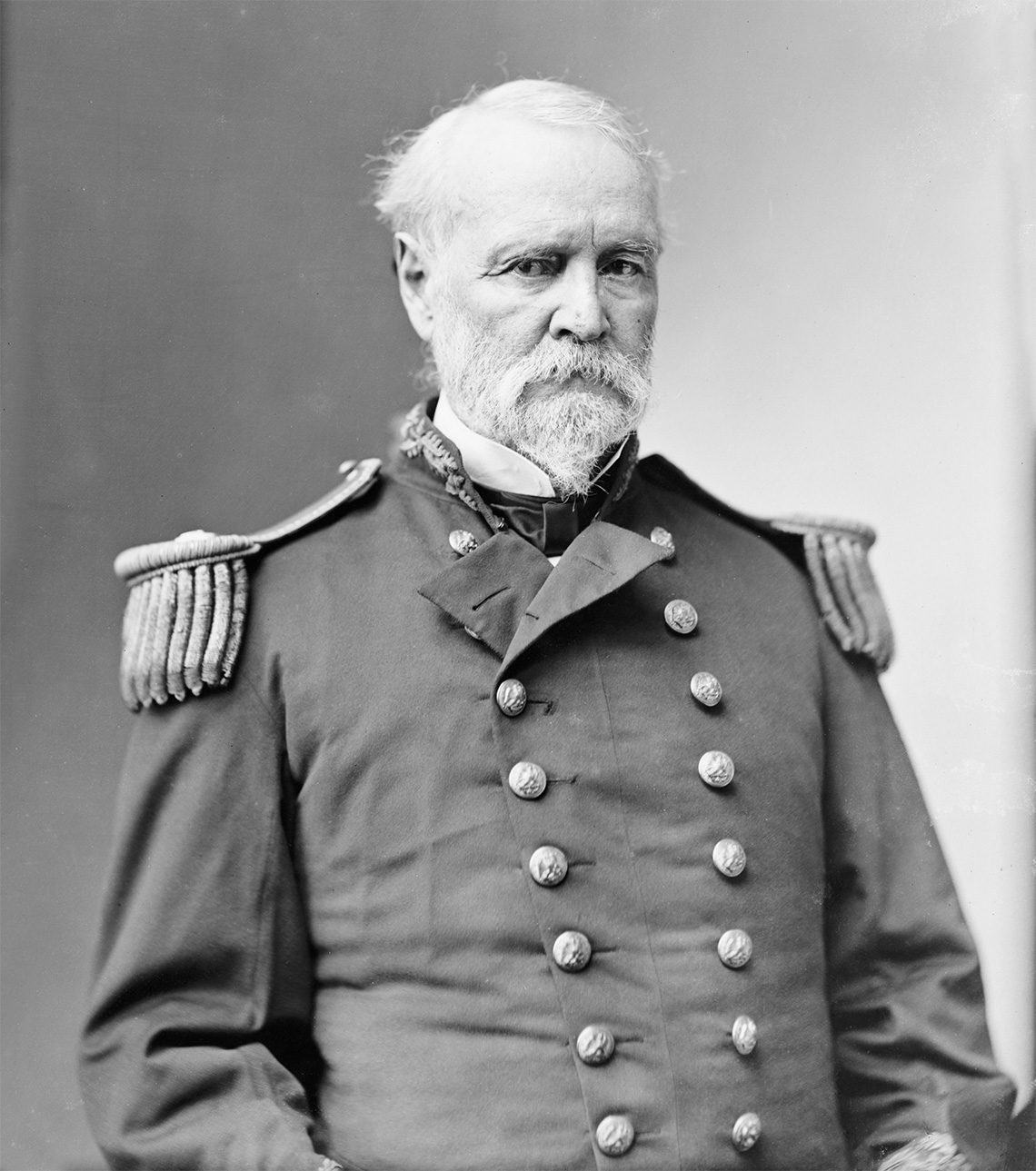Not many people would connect the Vietnam War to South Florida circa 1835.
But naval historians do. They know that the tactics of “riverine warfare” used in Vietnam were first developed by Lt. Levin Powell against the Seminoles.
In fact, if not for simple twists of fate, we could be living now in Fort Powell, not Fort Lauderdale. Lieutenant Powell had set up a major encampment on the New River two years before Major Lauderdale came upon the scene. Both would fight the Seminoles. But one has a city bearing his name.
Powell was born in Virginia in 1803, and in 1826 was commissioned as an officer in the U.S. Navy. In December of 1835, Seminole tribes launched a number of daring attacks across Florida, and the Second Seminole War had begun. The next year, Powell was dispatched to patrol the area from Cape Florida to the New River.
Commodore Alexander Dallas was in overall command of the naval forces operating in the Seminole War. A military journal says he “highly commended Powell and his men, citing their perseverance and exertions under circumstances of privation and exposure … in open boats.”
Indeed, “open boats” was what riverine warfare was all about. Powell developed the strategy of sending the larger cutters with supplies away from the battle areas – the marshy terrain of the Everglades – while he operated in dugout canoes and other small vessels.
For the first time in its history, the U.S. Navy was pitted against a non-maritime foe. There were no foreign merchant ships to attack; there were no enemy fleets. Only wily groups of Seminoles operating in small bands. That is, guerrilla warfare.
In their first major attacks against government forces in Florida, the tribe had shown large forces, anywhere from 200 to 1,000. But as time went by and the numbers began to go against them, they kept to small bands, attacking when they could and retreating into the Everglades, as they had in the infamous Cooley massacre.
A familiar name pops up in the annals of Powell’s forays into the Everglades, that of Stephen Mallory of Key West, who was brought on board the expeditions as something of a local guide.
Have you been to Mallory Square in Key West to watch the sunset? Yes, this is the same Mallory, who later became a U.S. senator.
Then just 20 years old, Mallory wrote of the “pleasant” experience with Powell in his diary, “in command of a fine body of seamen and my own superb long, center board, schooner-rigged whale boat.”
For non-sailors, a key word here is centerboard, which is a keel that can be retracted for shallow depths.
Mallory’s description notes that a) he was probably not in charge of these seamen; and b) it may not have been that pleasant “wading through the Everglades and pulling boats across half-submerged islands” – which is much of what Powell’s crews experienced.
Powell’s excursions in the New River area – 150 sailors and marines – did not lead to major battles with the Seminoles like Major Lauderdale’s encounter with Sam Jones, aka Arpieca. But Powell pioneered the strategy with the most success at keeping Seminoles on the run – using small crafts as the naval element and then leading marines miles into enemy terrain.
Up until this point, U.S. troops had been suffering defeats and high numbers of casualties with the tactics of sending in military columns to fight head on, trying to build roads, fording rivers and erecting forts for supply chains.
Powell’s troops did engage in skirmishes and suffer casualties on a smaller scale, and they were instrumental in transporting villagers fleeing Indian attacks, ferrying them to safety.
Less than a decade after the construction of Major Lauderdale’s fort (which was located near the current waterside park in Cooley Hammock) and the New River encampment of Powell, there was not a trace of either. But one surviving edifice – some simple wooden barracks – was apparently lasting enough to be called “fort,” which remained on maps and eventually gave a town its name. Its namesake died less than a year after his battle with Sam Jones, who retreated into the Everglades never to fight again.
All this was some 50 years before our city’s other founding father, Frank Stranahan, set up his trading post.
Meanwhile, Powell did not go off and fade away. He had a long and successful military career, which included the command of the USS Potomac during the Civil War. He retired a rear admiral and died in Washington, D.C. in the age of 82.












